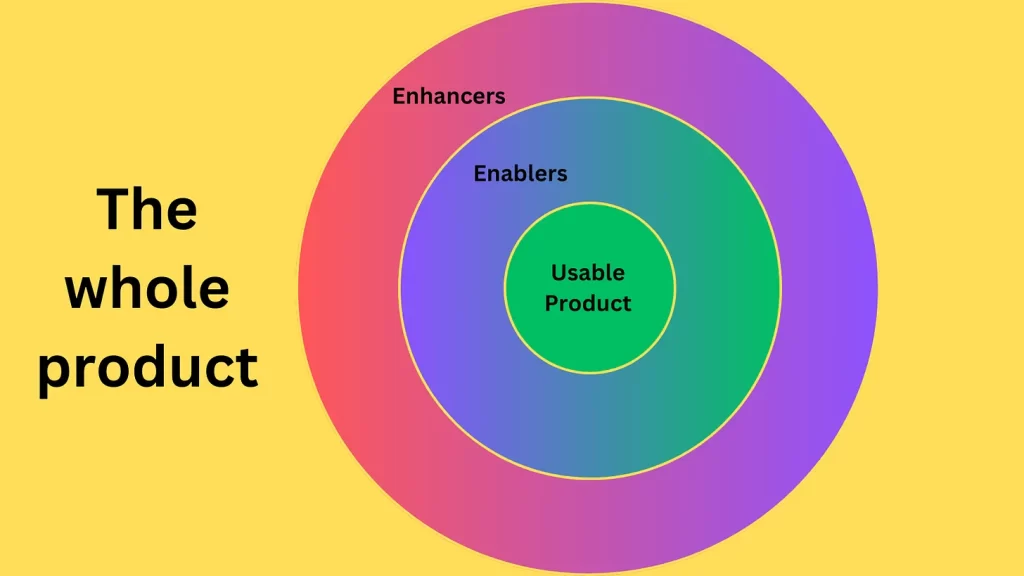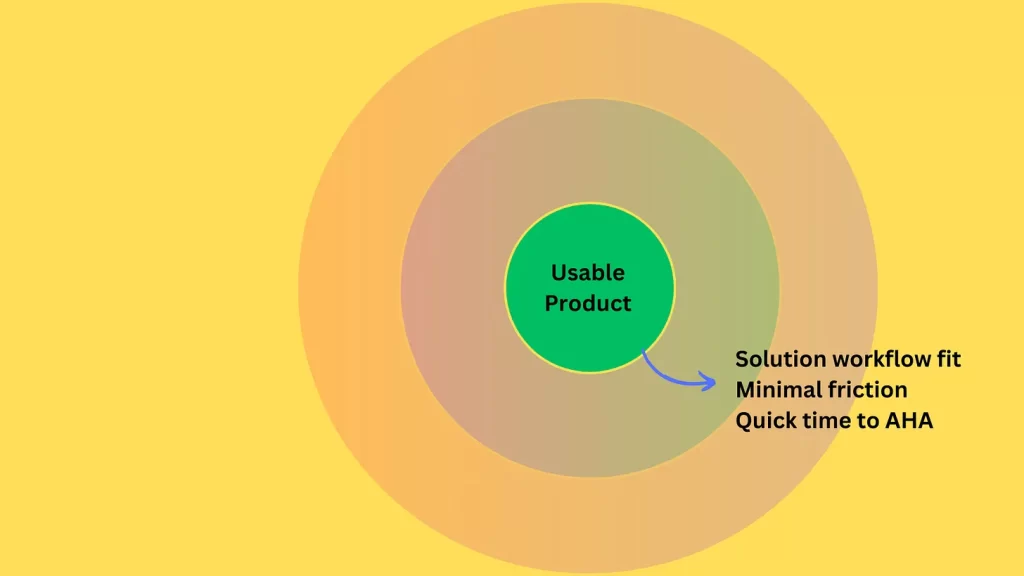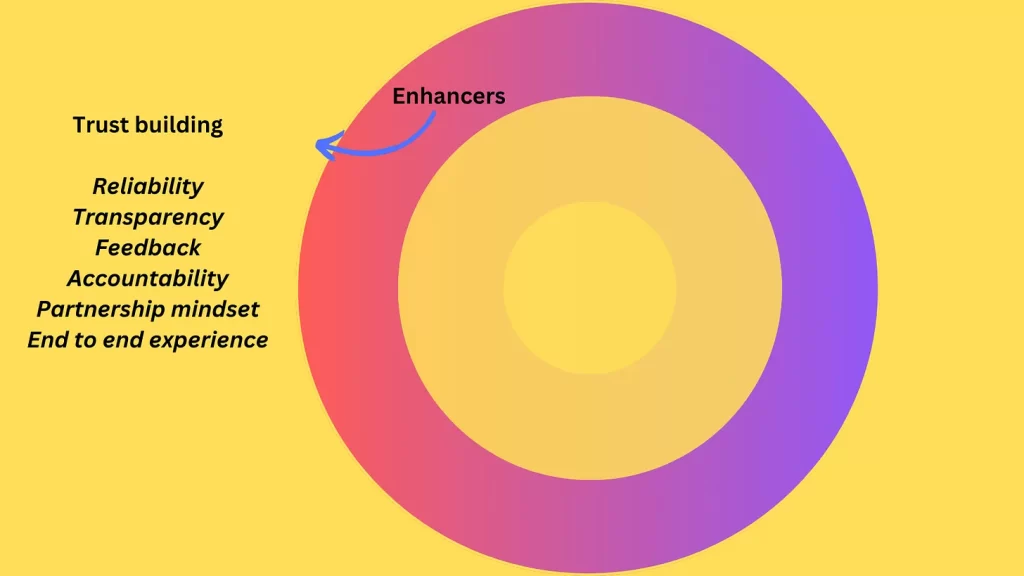B2B product managers should embrace whole product thinking
As a B2B product manager, you are primarily responsible for building the right product for your ideal customer that provides them value. In order to ensure that your customer is able to extract the desired value, just relying on the core product features is not enough.
You have to embrace the concept of whole product thinking.
What is whole product?
Beyond the core features your product provides, anything that helps to enhance the experience of your customer and make them use your product with the least effort is also considered part of your product.
For example, I recently bought solar panels for my home. The product of course are the panels. Assuming that I could even install them on my own (I cannot), would I be able to use it properly. No.
Even after professional installation, the wiring had to be hooked up to my existing home wiring and to the meter. New circuits had to be installed.
Then I needed to get approvals from the utility company as well as the city. And finally I need the permission to operate from the utility so that I can participate in generation credits. I also need the necessary details to be able to file for tax credits. That’s a lot of work to get the core product, the solar panels, to get to actually realize the value I needed – reduced electricity bill at a reasonable price point.
And all of this was done by the company where I bought the solar panels (Tesla). They took care of the whole thing. A month later my electricity bill dropped to the bare minimum. I finally got the desired value.
So what did I actually purchase? Not just the panels. But the whole value. That’s the concept of the whole product.
Let’s slice the whole product into 3 layers.
- The Usable Product
- The Enablers
- The Enhancers

1. The Usable Product

At the very core is of course your product and all the features a user will use. Let us assume for argument’s sake that you did the right discovery and validation and you have developed a really cool product with the best UX and technical architecture. It works.
That’s the starting point. Now you need to make sure to take care of a few other things.
- Solution Workflow fit
B2B product managers should always ensure that their product fits seamlessly into the workflow of their target users. By aligning the product’s features, functionality, and integration capabilities with the customer’s workflow, the product manager can enhance its value proposition. This alignment not only improves customer satisfaction but also increases the likelihood of adoption and long-term usage.
For example, you may have built an awesome software for sales teams to follow up on leads. But the leads are generated in an external system and requires someone to manually import or enter leads. That’s not an ideal workflow fit. You want the leads to flow in automatically so that the sales reps can only focus on following up on the lead.
In B2B, there are many systems in place such as CRM, ERP, Marketing, Web site and integrating them all is not easy. But from a solution perspective, it is absolutely critical. Imagine relying on manual data updates that can be prone to errors. Fixing those errors becomes costly and time consuming, and eventually the customer gives up. Too much hassle. Your goal is to remove the hassle factor.
If you are building products in B2B, you need to ensure solution workflow fit. To achieve a solution workflow fit, the product manager should conduct extensive research, engage in customer interviews, and leverage user feedback to gain insights into how the product can seamlessly integrate into the customer’s existing systems and processes. By understanding the customer’s needs and pain points, the product manager can make informed decisions about prioritizing features, optimizing user interfaces, and streamlining the overall user experience.
- Minimal friction
Minimizing friction is crucial for B2B products. Friction refers to any barriers, complexities, or obstacles that hinder the adoption or usage of the product. B2B customers value efficiency and ease of use, so reducing friction becomes paramount.
Product managers should focus on simplifying the onboarding process, minimizing the learning curve, and streamlining the overall user experience. This can involve providing intuitive interfaces, clear instructions, and self-explanatory features.
By reducing friction, product managers enhance user satisfaction, increase the chances of customer retention, and drive positive word-of-mouth recommendations.
- Quick time to AHA
The “AHA” moment refers to the moment when a customer realizes the full value and potential of the product. For B2B products, it’s essential to facilitate this moment as quickly as possible. The faster customers can see tangible benefits, the more likely they are to continue using the product.
Product managers should focus on providing features or functionalities that deliver immediate value and create a positive impact on the customer’s business. By identifying and implementing “quick wins,” product managers can help customers experience the product’s value proposition early on.
Regularly monitoring and analyzing user behavior and engagement data can help identify potential bottlenecks or areas where customers may struggle, allowing product managers to iterate and improve the onboarding experience continuously.
2. The Enablers
Beyond the core, you need to think about all other activities that will enable your user to use your product and derive value. Here are some enablers that you need to make sure are put in place for your product.
-
Support readiness
Ensuring that the support team has been trained on your product and they are ready to resolve any incoming issues. Initially, you may still be involved in working with support and over time support can fully manage. Still, you still need to be able to arm the support team on how to respond. They are the first line of defense for a user. When users run into any issues, they will call support first. You want to make sure support is ready. In fact, it is a good idea to anticipate what kind of issues a user might face and prepared the support team with an internal FAQ. -
Documentation
Sometimes a user may want to refer to documentation especially for a complex task or customization. As a PM, you need to ensure all documentation is complete and that the most important parts of the product are covered. -
Onboarding
We covered onboarding as part of the core. It is essential to make sure the onboarding of users is smooth and frictionless. In my previous company, there was a specific onboarding team whose job was to make sure the customer gets to the set up and customize the product within 30 days. As a PM, you need to make sure that onboarding can be easy and can be done by your onboarding team or by the users themselves. If there are complex steps, then find a way to simplify. Remember, you also have to get the AHA moment quickly. -
Training
Many software vendors have training departments that create self guided or instructor led training programs. If you are launching a new product, you want to ensure the requisite training is completed and materials are available. -
Partners and Ecosystem readiness
Most B2B product vendors sell and service through partners and resellers. Many other vendors rely on a massive developer network. As a PM, you need to make sure they are ready as much as your own support team.
This was certainly not an exhaustive list. Your specific product or your company may need additional enablers.
While the actual work may be the responsibility of the respective departments, as a PM you need to make sure you provide the right inputs and ensure they get completed in time for your product. The last think you want is your product is with the customer but support is not yet trained to respond to any issues.
3. The Enhancers

Finally, as a PM you need to provide the best end to end experience to your customers. There are many experience enhancers that you might want to think about. These are the intangibles. The day to day touchpoints of your customers – pre sales, post sales etc.
This is where trust gets built. Building and maintaining trust is a crucial aspect of B2B product management. Trust forms the foundation for successful long-term relationships with customers. Product managers should focus on establishing trust through various means:
a. Reliability: Ensure that the product consistently performs as expected, without major bugs or technical issues. Maintain high product quality standards and prioritize reliability in all aspects, including security, data privacy, and compliance. Any glitch early on, brings a bad taste and takes a long time to win the trust back.
b. Transparency: Be transparent about the product’s capabilities, limitations, and roadmap. Clearly communicate any changes or updates to the product and provide comprehensive documentation to enable customers to make informed decisions. Share your high level roadmap as applicable so that you can instill confidence in customers on your ability to execute now and into the future.
c. Customer feedback: Put the customer at the center of decision-making processes. Actively listen to customer feedback, respond promptly to inquiries or issues, and incorporate customer insights into product improvements.
d. Accountability: Take responsibility for any mistakes or shortcomings and work towards resolving them promptly. Keep customers informed about progress and solutions while demonstrating a commitment to their success.
e. Long-term partnership mindset: Foster a sense of partnership with customers, aiming for mutual success. Regularly engage with customers through user groups, advisory boards, or personalized interactions to deepen the relationship and understand evolving needs.
f. Focus on end-to-end customer experience: B2B product managers must have a holistic view of the customer journey and prioritize delivering an exceptional end-to-end customer experience. This encompasses all touchpoints, from the initial interaction with marketing materials and the onboarding process to ongoing support and product updates.
By prioritizing trust building, product managers can establish strong customer relationships, drive customer loyalty, and differentiate their product from competitors in the B2B marketplace.
Earning trust is not enough. You have to keep working at it. It’s like any relationship.
Conclusion
B2B products are complex. It’s never just about the core product. To effectively realize the full value of your product by your customer, you need to think of the whole product. Or you risk losing adoption and eventually the customer.
Here are some potential upcoming posts (not a roadmap 🙂
Yet another roadmap technique – the building block method
How technical should I be as a PM ?
I am PM, Should I do an MBA?
Meanwhile, I started writing a book called “The introverted product manager”. All my life I have been an introvert which is not a happy ground for a PM role. But I adapted.
In this eBook, I share my techniques on various situations that are challenging for an introvert PM – be it customer meetings, presentation to execs or networking events. I am hoping to finish the book in the next 30 days.
Would you like a copy? It’s free for my newsletter subscribers.

